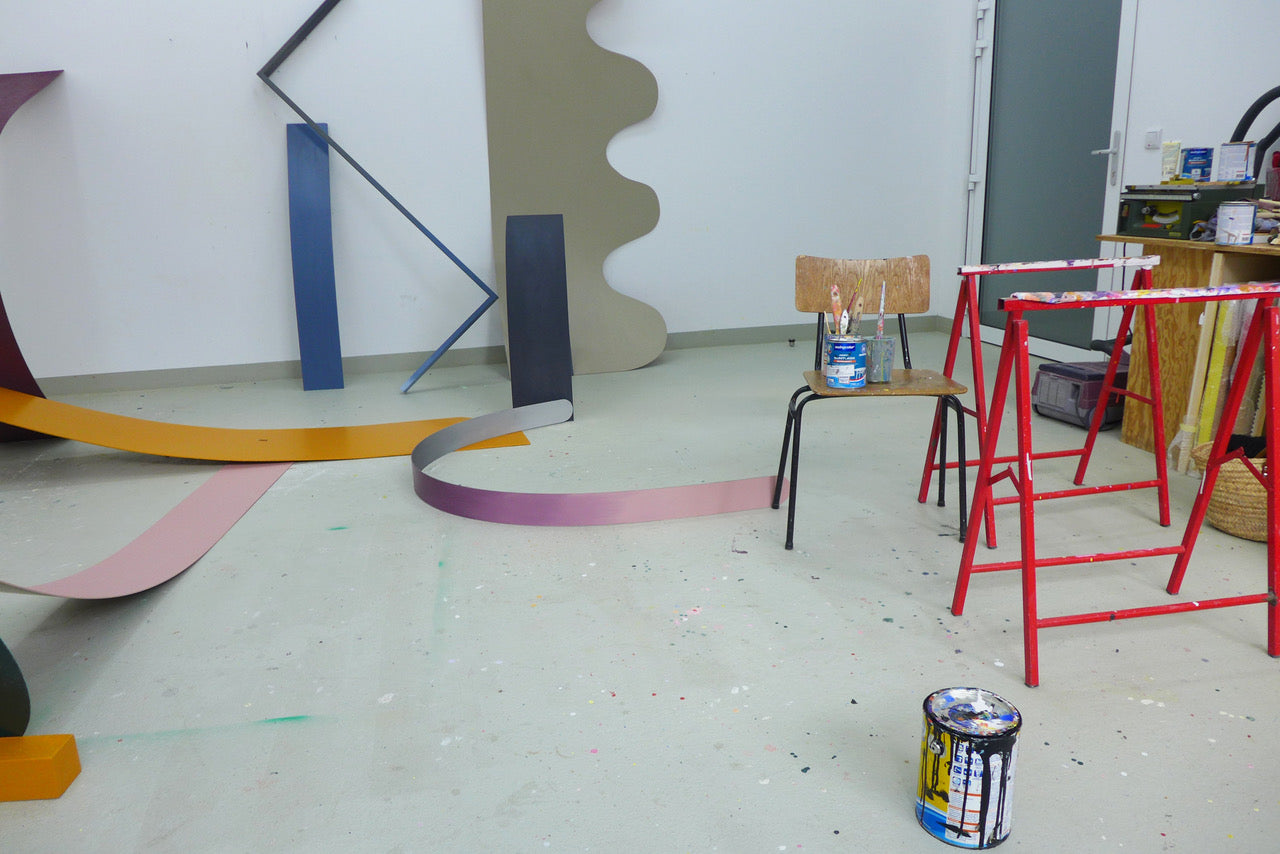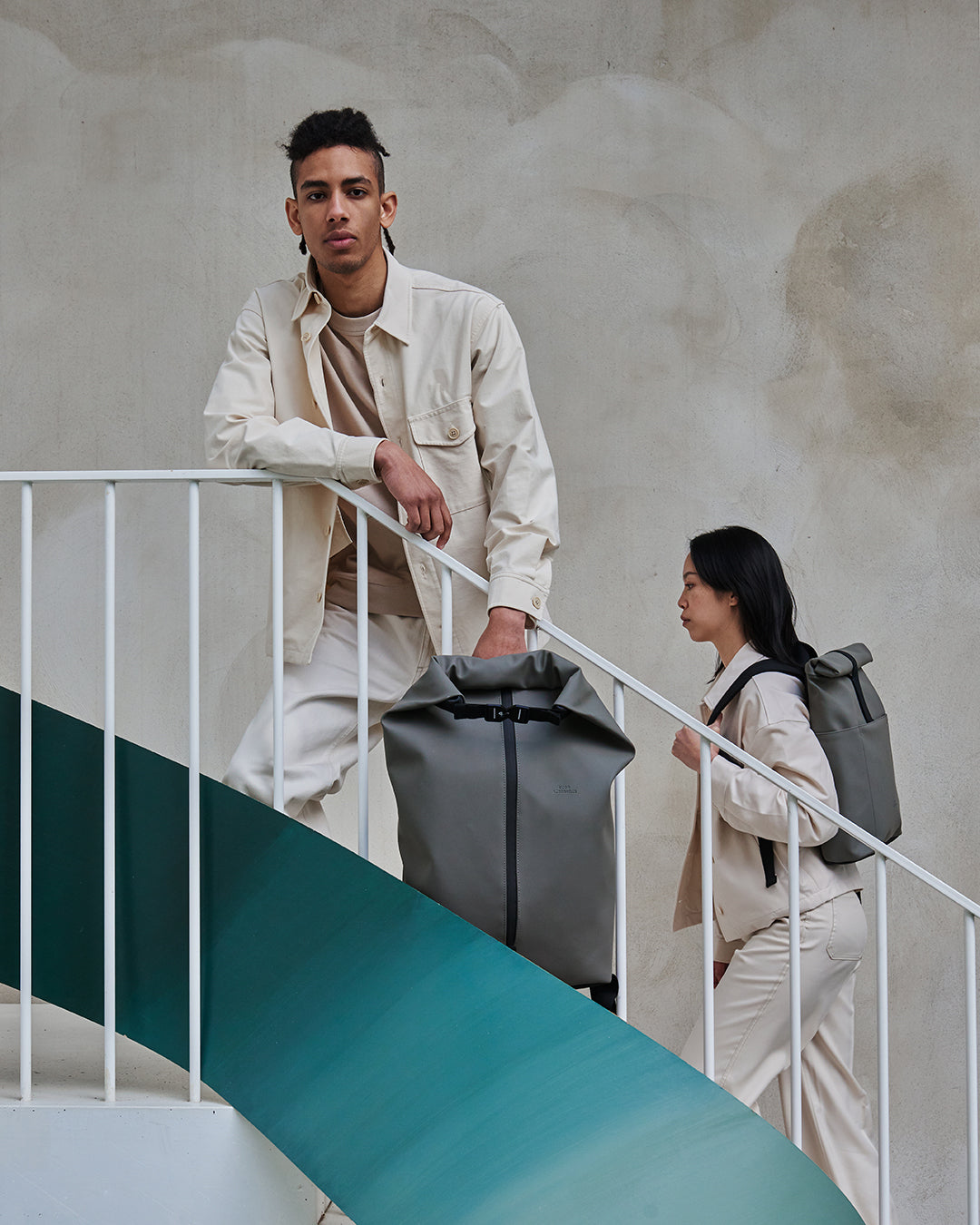





Artist Collaboration
Katharina
Trudzinski
Hamburg-raised artist and textile designer Katharina Trudzinski decided to take a second residence in Berlin
early 2009, where she found a live-work space on the fringes of the creative Neukölln neighborhood. She
describes herself as a multidisciplinary artist, creating sculptural installations with beautiful
intersections of colors, planes, and geometric shapes. Made from constellations of scraps, street finds, and
everyday junk cloaked in perfectly calibrated hues, her work is meant to dialogue with its surroundings.
Wildly colourful, playfully composed and executed with expert precision and technique, her work was a perfect
match to highlight our Lotus Series.

Katharina Trudzinski
Artist
Berlin, Germany
Berlin, Germany
Artist Collaboration
Interview
You decided to move from Hamburg and get a second residence in Berlin. Why did you decide to move to
Berlin and can you tell us a bit more about your live-work space in Neukölln?
I went to school in Hamburg and studied there. I felt that Berlin was a big and exciting neighbor. The rent for apartments and workspaces was still cheap (back in 2009), and the art scene was large and international. Friends of mine already lived in Neukölln. After graduating I found a cheap apartment on Sonnenallee, which I also used as a studio. For months I was busy with the renovation. Today I am still living in the same apartment and have a nice studio in Treptow. Sonnenallee is a very busy and crowded street. The littering of the neighborhood sometimes sucks, but there is also a nice side to it: I find a lot of work-material like fragments of furniture and wood in the street.
I went to school in Hamburg and studied there. I felt that Berlin was a big and exciting neighbor. The rent for apartments and workspaces was still cheap (back in 2009), and the art scene was large and international. Friends of mine already lived in Neukölln. After graduating I found a cheap apartment on Sonnenallee, which I also used as a studio. For months I was busy with the renovation. Today I am still living in the same apartment and have a nice studio in Treptow. Sonnenallee is a very busy and crowded street. The littering of the neighborhood sometimes sucks, but there is also a nice side to it: I find a lot of work-material like fragments of furniture and wood in the street.


Your work is made from constellations of scrap, street finds and everyday junk cloaked in perfectly
calibrated hues. Do you get inspired while walking through the streets of Berlin?
The streets of Berlin are a great source of inspiration. I love the different atmospheres of the neighborhoods and how they change with the seasons. I especially like the dreary apartment blocks in the residential areas of Neukölln, Kreuzberg and Treptow. In addition to being a source for materials, the city is also the coulisse for many of my works. I take photos of my sculptures in the streets. Also, I do my “one-minute-sculptures” outdoors. Recently, reinforced by the lockdowns and social isolations during Covid, I made many of these works, which interact specifically with the architecture in my area. I always start with long walks through the neighborhood.
You have an extraordinary skill for color palettes and wild techniques that may very well boggle the minds of gallery goers everywhere. What role do colors play in your art?
Color is incredibly important to me. It can change everything and take the artwork to a new direction. Its effect is very direct and can create both comfort and discomfort.
The streets of Berlin are a great source of inspiration. I love the different atmospheres of the neighborhoods and how they change with the seasons. I especially like the dreary apartment blocks in the residential areas of Neukölln, Kreuzberg and Treptow. In addition to being a source for materials, the city is also the coulisse for many of my works. I take photos of my sculptures in the streets. Also, I do my “one-minute-sculptures” outdoors. Recently, reinforced by the lockdowns and social isolations during Covid, I made many of these works, which interact specifically with the architecture in my area. I always start with long walks through the neighborhood.
You have an extraordinary skill for color palettes and wild techniques that may very well boggle the minds of gallery goers everywhere. What role do colors play in your art?
Color is incredibly important to me. It can change everything and take the artwork to a new direction. Its effect is very direct and can create both comfort and discomfort.


As a sculptor and painter you create pieces that defy logic and speak directly to the viewer’s senses. Is
it meant to get them lost in your intriguing use of space and form?
Capturing both the gaze and mind of the beholder is a lofty goal, I am happy when it happens. In the field of contemporary art, the rules and codes of the scene can be quite narrow and should not be taken too seriously. I think it's great when my work finds cross-cultural and cross-generational friends.
Capturing both the gaze and mind of the beholder is a lofty goal, I am happy when it happens. In the field of contemporary art, the rules and codes of the scene can be quite narrow and should not be taken too seriously. I think it's great when my work finds cross-cultural and cross-generational friends.


You are trained in textile design and even released a clothing collection. How does this still influence
your work today?
At my former company hui-hui, I did a lot of digital prints on fabric. My current work does not use textiles, but the principle of constructively filling an area remains very important to me. The same goes for color composition, rhythm, distribution, repetition. I also have deeply internalized the craftsmanship, a slow way of working, as if I were weaving a carpet.
Thank you!
At my former company hui-hui, I did a lot of digital prints on fabric. My current work does not use textiles, but the principle of constructively filling an area remains very important to me. The same goes for color composition, rhythm, distribution, repetition. I also have deeply internalized the craftsmanship, a slow way of working, as if I were weaving a carpet.
Thank you!
























